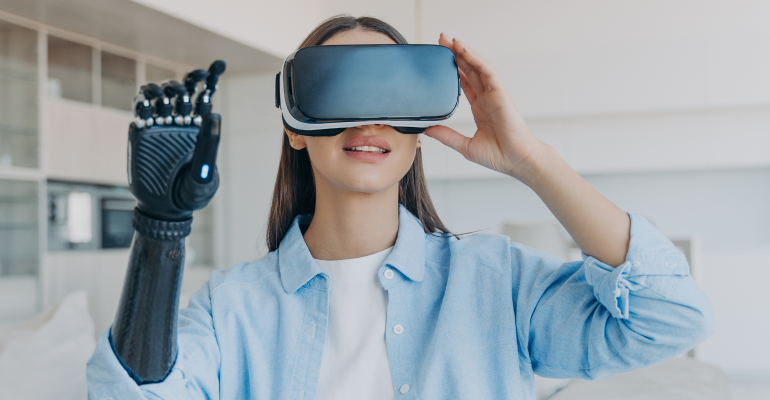Recovery from treatable illnesses or disabilities hinges on two crucial factors: the effectiveness of treatments and the overall quality of life experienced by patients. The fusion of technology and current trends in patient recovery and quality of life has significantly enhanced both these aspects.
According to data from the World Health Organization (WHO), approximately 2.4 billion people worldwide suffer from health conditions that can be improved through rehabilitation. Rehabilitation, addressing physical, mental, and emotional issues, is a pivotal component of patient recovery, substantially elevating the quality of life for individuals grappling with illnesses, injuries, or disabilities.
Advancements in technology are revolutionising rehabilitation processes, making them more effective and accessible. The burgeoning demand for non-invasive and cost-effective solutions has spurred the growth of the rehabilitation technology market, projected to reach US$35 billion by FY28.
However, integrating technology into rehabilitation solutions presents challenges, such as access, cost, privacy concerns, and the need for specialised training. Despite these obstacles, the healthcare industry continues to explore current trends that are reshaping patient recovery and quality of life.
Genomic Medicine
Genomic sequencing, a cutting-edge technology, has unlocked the potential of personalised medicine. By identifying genetic factors contributing to diseases, targeted therapies are developed and tailored to individual patients. Furthermore, gene-editing technologies like CRISPR offer the promise of treating genetic disorders at their root level, opening new avenues for medical intervention.
Virtual Reality (VR) and Augmented Reality (AR)
VR and AR technologies are transforming pain management and medical training. In pain management, these immersive technologies serve as distraction therapy during treatments, reducing the reliance on traditional medication. Medical professionals utilise VR and AR for realistic simulations and training scenarios, honing their skills and enhancing decision-making abilities.
Biotechnology and Regenerative Medicine
Biotechnological advancements, particularly in stem cell therapy, offer innovative treatments for chronic conditions and tissue regeneration. Stem cell research has paved the way for therapies once deemed impossible, providing hope for patients with debilitating diseases. Additionally, the combination of 3D bioprinting and gene editing techniques has made significant strides in creating organs compatible with patients' bodies, drastically reducing the risks associated with organ transplants.
Mental Healthtech
In the realm of mental health, technology has democratised access to therapeutic interventions. Digital therapeutics, delivered through mobile apps and online platforms, offer cognitive behavioural therapy (CBT) and other therapeutic interventions, making mental healthcare accessible and convenient. Wearable stress trackers, equipped with real-time feedback mechanisms, assist individuals in managing their mental well-being effectively, empowering them to lead healthier lives.
Robotics in Surgery and Rehabilitation
Robotic technologies have profoundly impacted surgery and rehabilitation. Robot-assisted surgery allows surgeons to perform complex procedures with unparalleled precision, minimising invasiveness and reducing recovery times. In rehabilitation, robots customise exercise routines based on patients' progress and needs, enhancing the effectiveness of therapy.
3D Printing
The advent of 3D printing technology has revolutionised the creation of medical devices. Customised implants and prosthetics, produced using 3D printing, fit patients perfectly, improving comfort and functionality. Surgeons benefit from 3D-printed anatomical models, enhancing their skills through realistic practice surgeries, ultimately improving patient outcomes.
Telemedicine and Remote Monitoring
Enhanced telemedicine platforms enable real-time consultations, empowering doctors to remotely assess patients' vital signs and monitor their progress. This is complemented by advanced wearable devices that offer continuous monitoring, allowing physicians to track patients' health remotely and intervene promptly when necessary.
As these advancements continue to unfold, they promise a future where healthcare is not just about treatment; it's about empowerment, personalisation, and a significantly improved quality of life for millions around the world.
Jennifer Orisakwe is a health researcher and data storyteller, who loves to explore the ways actions (and inactions) of healthcare stakeholders affect decision-making and outcomes.






